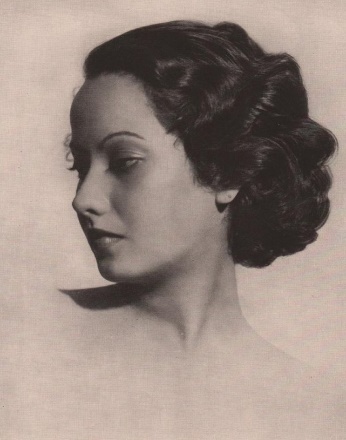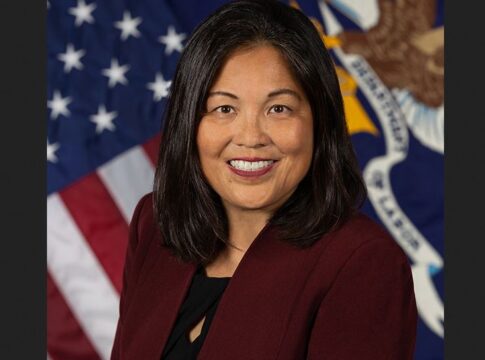By Raymond Douglas Chong, AsAmNews Staff Writer
Merle Oberon, the British actress, was an American screen legend during the Golden Age of Hollywood. Her exotic beauty on the silver screen, raven-haired, almond-eyed, and tan-skinned with a rosebud mouth, captivated everyone. Oberon is best remembered as Catherine Earnshaw, the fated heroine, in the classic romance Wuthering Heights, in 1939.
Despite her finest acting, Oberon scandalized Hollywood tabloids with her love affairs and fascinating marriages during her stardom (more on that later). The writers also were intrigued by her mysterious roots in British India. For her entire career and until her death, she successfully hid her South Asian ancestry so she could make it in Hollywood.
Early Acting Career
Oberon claimed that she was born in Tasmania, an island state of the Commonwealth of Australia, on the Pacific Ocean. In reality, she was born in Bombay, British India. Her father, a British Army officer, died in a hunting accident. Her aristocratic godparents raised Oberon in Bombay, British India.
In 1928, Oberon, then known as Queenie Thompson, arrived in London to pursue an acting career in British cinema. Constance, her older “sister,” accompanied her. She worked as a club hostess while seeking acting roles in silent films. The Irish producer and director Rex Ingram cast Oberon as an extra in the drama The Three Passions, filmed on the French Riviera. During the lean five years, she played extras and uncredited roles in silent and sound films.
LATEST STORIES
“I could not dance or sing or write or paint. The only possible opening seemed to be in some line in which I could use my face. This was, in fact, no better than a hundred other faces, but it did possess a fortunately photogenic quality,” she said in Film Weekly.
This photogenic quality lured Alexander Korda, the Hungarian producer, director, and screenwriter, to sign a studio contract with Oberon. Korda became her mentor, lover, and husband. He created Merle Oberon as the stage name for Queenie O’Brien.
In the Oscar-winning The Private Life of Henry VIII (1933), starring Charles Laughton as King Henry VIII, Korda cast Oberon as Anne Boleyn, the ill-fated Queen. The media widely acclaimed her performance in this supporting role.
Oberon made her debut as the leading actress in The Scarlet Pimpernel (1934), produced by Korda. She played Lady Marguerite Blakeney with Leslie Howard as Sir Percy Blakeney, British aristocrats, amid an adventure during the French Revolution.
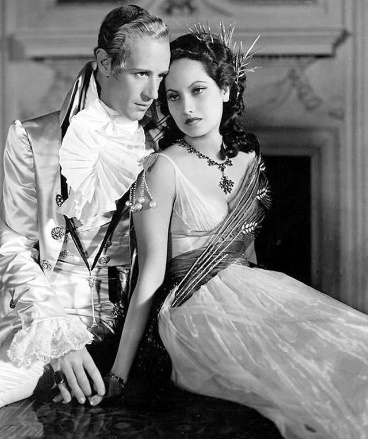
Oberon starred in Korda’s The Private Life of Don Juan (1934). She played Antonita, a dancer of passionate temperament, opposite Douglas Fairbanks, as Don Juan.
Samuel Goldwyn, the legendary American producer, lured Oberon to Hollywood. Oberon starred in Samuel Goldwyn Productions’ Oscar-winning The Dark Angel (1935). The film tells the tale of love for Kitty Vane (Oberon) by Alan Trent (Fredric March) and Gerald Shannon (Herbert Marshall) in England during World War I. Oberon was nominated for an Oscar as Best Actress.
Oberon was considered an exotic beauty, as a heartthrob, due to her Oriental features. In contrast, the typical Hollywood beauty was blonde-hair, green-eyed, and ivory-skinned, just like Mae West and Jean Harlow.
While her star was rising in Hollywood, in England, while filming Korda’s I, Claudius (1937), Oberon was injured in a car accident in London. She suffered a concussion and facial cuts. Then in 1940, her hue worsened due to cosmetic poisoning and a sulfa drug allergy.
Wuthering Heights
Oberon was critically acclaimed as Catherine Earnshaw in the Oscar-winning Wuthering Heights. She played opposite Laurence Oliver as Heathcliff and David Niven as Edgar Linton. Based on Wuthering Heights, the 1847 novel by Emily Bronte, William Wyler directed the film, while Samuel Goldwyn produced it. Wuthering Heights is ranked #15 in “The 100 Greatest Love Stories of All Time” by the American Film Institute.
In this cruel love story, Heathcliff, an orphan, and Catherine have been in love since childhood. They wildly grew up in her father’s estate, Wuthering Heights, in England. But they were fatefully broken up. With their romance over, Catherine married Edgar, the wealthy gentleman. The savage Heathcliff found his fortune and returned home. At their final reunion, Catherine falls gravely ill. Heathcliff rushes to her bedside, where she dies in his arms. The ghost of Catherine haunts the vengeful Heathcliff.
Forgive me, Heathcliff. Make the world stop right here. Make everything stop and stand still and never move again. Make the moors never change, and you and I never change.
– Catherine (Merle Oberon)
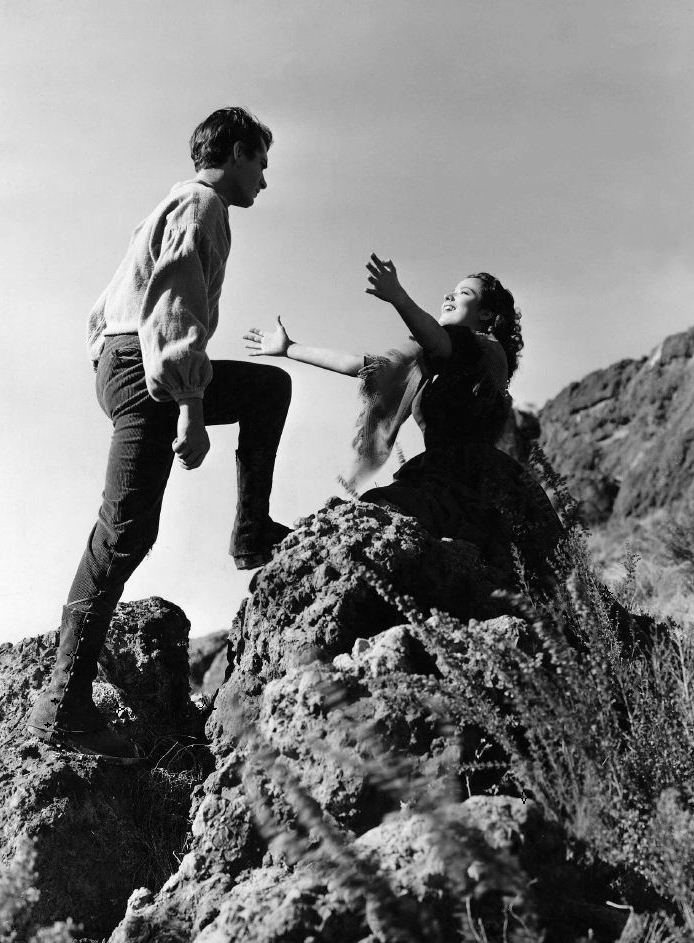

A Fading Star
Oberon peaked as a leading actress in Hollywood for two decades, from 1934 to 1954. She played George Sand in A Song to Remember (1945) and Napoleon’s empress Josephine in Désirée (1954). Her beauty shined in many costumed dramas.
Her final film was Interval (1973) with Dutch actor Robert Wolders.
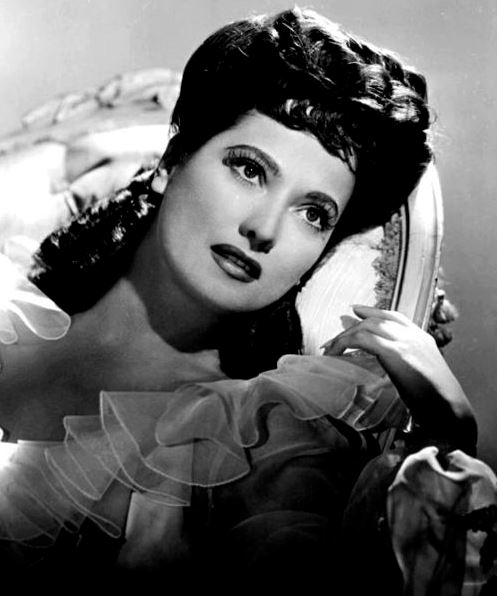
Love Life
Oberon’s love life was fodder for the Hollywood tabloids. She had love affairs with Hollywood leading actors like Leslie Howard, David Niven, and John Wayne.
Oberon had four marriages. She married Korda, the British movie mogul, in 1939 but divorced in 1945. Oberon married American cinematographer Lucien Ballard. He had devised a special camera light to obscure her facial scars on film. They divorced in 1949. Oberon married Italian steel tycoon Bruno Pagliai in 1957. They lived in Mexico but divorced in 1975.
In her final marriage, she married Dutch actor Robert Wolders, 25 years her junior. They were married until Oberon died of a stroke in Malibu, California, on November 23, 1979.
Oberon is interred at Forest Lawn Memorial Park Cemetery in Glendale, California.
The Mystery in British India
In 1983, in the biography – Princess Merle: The Romantic Life of Merle Oberon by Charles Higham and Roy Moseley, the authors found her birth certificate in Bombay, her baptismal certificate, letters, and photographs.
The documents revealed that Oberon was of Anglo-Indian heritage. She was born Estelle Merle O’Brien Thompson on February 19, 1911, in Bombay. The birth certificate showed that her father was Arthur Terrence O’Brien Thompson. Her mother was Charlotte Selby from Ceylon (Now Sri Lanka).
Thompson was a British mechanical engineer. He worked for Indian Railways, British India’s national railroad. He perished on the Western Front at the Battle of the Somme during World War I, due to pneumonia, in 1914.
Oberon’s mother, Charlotte Selby, was of Anglo and Ceylonese ancestry, mixed with Māori.
In 1917, Charlotte, her sister Constance, and Estelle (Oberon’s real name) moved to Calcutta. Oberon attended La Martiniere Calcutta School for Girls, a premier private school. Because of her family’s poverty and her mixed ancestry, girls cruelly taunted and tormented Oberon.
Oberon then stayed home to be schooled. She began acting in the Calcutta Amateur Theatrical Society in 1920. She watched her first silent film, the American drama The Dark Angel. Oberon was inspired by Vilma Bánky, its leading actress, to pursue her dream as an actress.
During her acting pursuit in British and American cinema, Oberon secretly pretended to be White (Anglo) to escape the systemic racism of the Hollywood studio system. White Hollywood did not accept multiracial people on the silver screen. Under Korda’s guidance, she created a deceiving myth for the world as she achieved the ultimate success in Hollywood as a White British lady. Her charade continued until her 1979 death.
The Legacy of Merle Oberon
Hollywood film critics and audiences recognize Merle Oberon as a screen legend during the Golden Age of Hollywood. She was renowned for her finest acting and glamorous beauty.
Oberon was a multiracial pioneer and the first Indian Oscar nominee amidst the whitewashed Hollywood studio system. She achieved Hollywood stardom while posing as a White lady.
The American Film Institute credited Oberon with 36 dramas, comedies, and thrillers from 1934 to 1973; during her acting career, Oberon has a terrazzo and brass star on the Hollywood Walk of Fame, at 6274 Hollywood Boulevard, for her contributions to the motion picture industry.
Merle Oberon was “The Exotic Starlet from British India.”
Without security, it is difficult for a woman to look or feel beautiful.
– Merle Oberon
AsAmNews is published by the non-profit, Asian American Media Inc. Follow us on Facebook, X, Instagram, TikTok and YouTube. Please consider making a tax-deductible donation to support our efforts to produce diverse content about the AAPI communities. We are supported in part by funding provided by the State of California, administered by the California State Library in partnership with the California Department of Social Services and the California Commission on Asian and Pacific Islander American Affairs as part of the Stop the Hate program. To report a hate incident or hate crime and get support, go to CA vs Hate.

